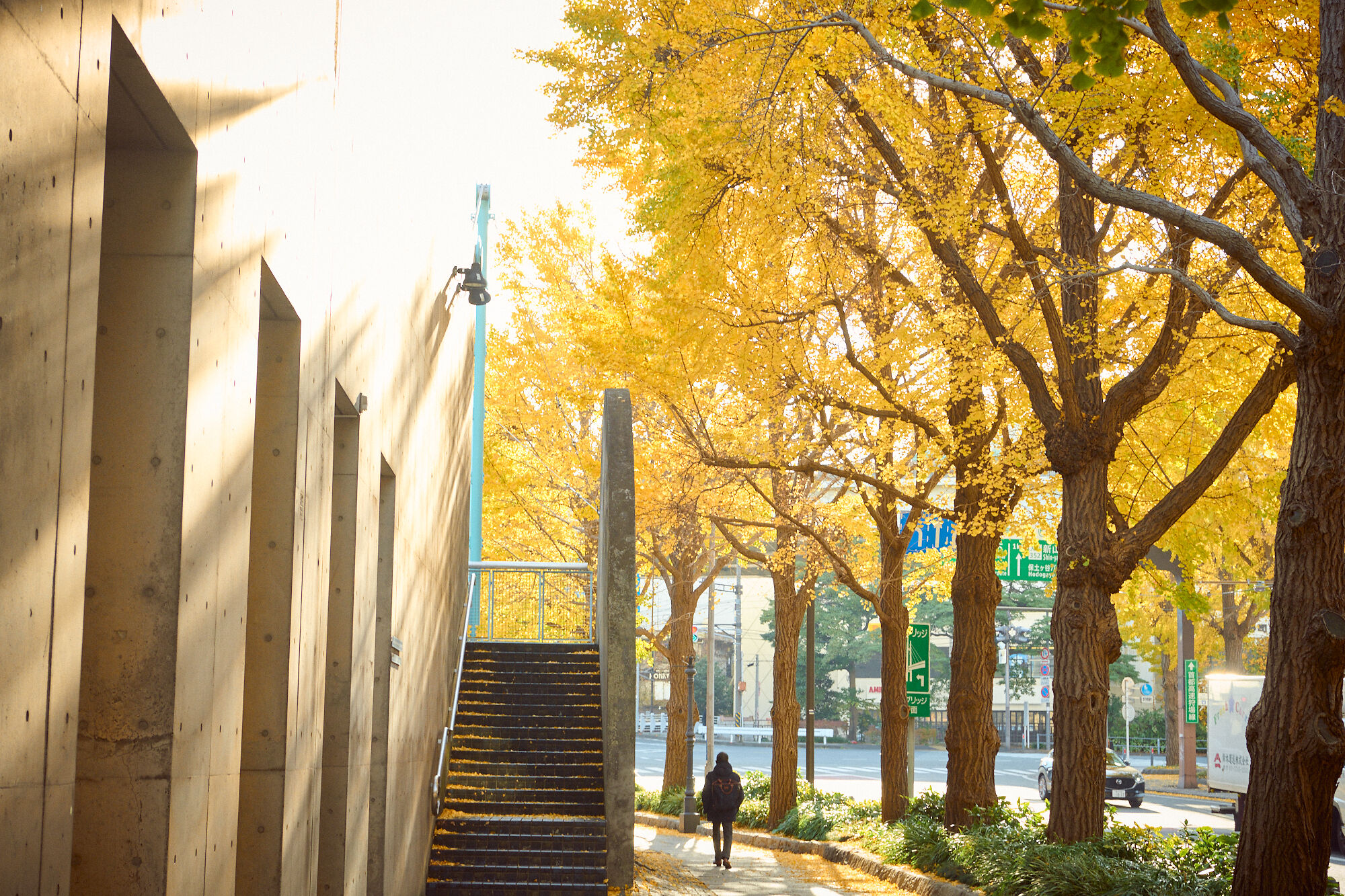Tokyo Ginkgo and etymological musings
Do not adjust your monitor: what you are seeing is indeed a faithful representation of the luminance and colour of the majestic Ginkgo biloba trees in late November and early December, shot just last week by Soeda – our man with a cam in Japan.
Soeda headed down to Meiji Jingu Gaien avenue in Tokyo to join in with the fun. In recent years, the annual turning of the leaves has developed into a mini festival, with street-food vendors setting up shop nearby to cater to the visiting dendro/chromophiles.
The near flourescent yellow pigment that attracts all the attention is a type of carotenoid – the pigment found in carrots and pumpkins. This phytochemical is produced just as the plant is breaking down the green chlorophyll that’s been powering it since the spring, storing any salvageable molecules from the chlorophyll in its limbs and trunk so that when the sun returns it doesn’t have to start from scratch. Pretty clever eh? This efficient chemical recycling may account for the success of the Ginkgo: they’ve been around in one shape or form since before the dinosaurs, making them the oldest living tree species in the world, and some individuals alive today are thought to be as much as 3,500 years old.
Naming and claiming something so ancient smacks a little of human hubris, and the story gets more complicated when you learn that ‘Ginkgo’ is a misspelling of the Japanese pronunciation ‘gin kyo’, for the kanji 銀杏 meaning “silver apricot”, which was in use as long ago as the 14th century. Engelbert Kaempfer is almost certainly the man responsible for this change, following his visit to Japan in the 1690s, and Carl Linnaeus, the godfather of naming, cemented the misspelling when he set it down in print nearly 50 years later. Regardless, the Japanese now call is Icho, and in Europe it is sometimes known as the maidenhair tree.
The naming of plants is a funny thing. Botanical names make it easy to classify and aid international understanding: talk to an American about white pine and they’ll think of Pinus strobus, whereas a Japanese gardener will think of Pinus parviflora (where it’s actually called goyo matsu, the five needle pine). Black pine in Europe is Pinus nigra, but Japanese black pine (kuro matsu) is Pinus thunbergii (Mr Thunberg – probably no relation to Greta, but who knows? – being the man who ‘discovered’ it). But can you discover a tree? Someone, somewhere has been calling it something for as long as there were words. And Gingko may have been around before there was even sentience. Makes you think, eh?
Phew. If like me, all this thinking about thinking is too much for you, you can always rest your eyes on the big yellow leafy things in Soeda’s great photos and try not to think of any words for a bit. Enjoy.







